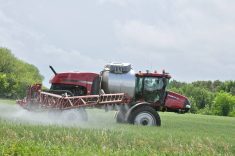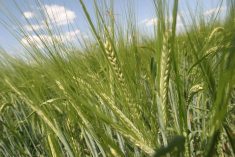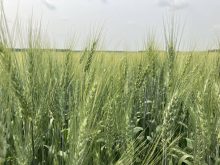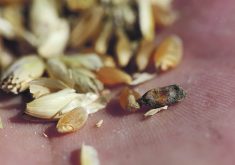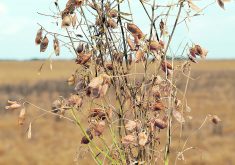The second year of a fusarium graminearum infection study in Alberta’s cereal and corn crops shows a slight decline compared to a year earlier but the disease continues to be prevalent throughout irrigated acres.
The disease, which results in fusarium head blight (FHB), is seeing infection rates as high as 50 percent in Lethbridge County, according to the Alberta Seed Processors study. Infection rates run from 11 percent to 40 percent in the neighbouring counties of Taber, Forty Mile, Newell and Warner, according to the report.
Monica Klaas, Alberta Seed Processors general manager, said FHB thrives in areas of high moisture, which makes areas under irrigation susceptible.
Read Also

New program aims to support plant-based exports to Asia
Understanding the preferences of consumers in Taiwan and how they differ from Indonesia or Malaysia isn’t easy for a small company in Saskatchewan.
“We definitely have the warmer temperatures but we didn’t have that moisture (last year in Western Canada), that’s why irrigated acres are more susceptible.”
That’s likely why FHB infection rates dropped in many areas of Alberta in the study’s second year, with the exception of southern Alberta in 2021, she said.
The nature of the disease means it will return, said Klaas.
She said fusarium is a field-borne pathogen and becomes endemic in an area.
“The reason we put the map out is to make sure everybody still recognizes fusarium as being an economically important pathogen.”
Klass said FHB can drastically reduce yields and render grain unsuitable for feed and milling.
Over the last two decades, FHB has become prevalent in southern Alberta and Klaas said there is more awareness.
“In the early years, there may have been a bit of this head in the sand attitude towards fusarium,” she said. “While nobody wants fusarium, ignoring it doesn’t make it go away.”
Ensuring adequate surveillance for FHB and recognizing if it is an endemic problem is the first step in dealing with the issue, she said.
“There is work in the plant-breeding spectrum of breeding fusarium-tolerant seed varieties and we always advise people to take a look at the Alberta seed guide and select a variety that is best-suited to your location,” said Klass.
That goes especially for areas such as the irrigated acres in southern Alberta.
Additionally, there are newer fungicidal treatments available.
But some of the traditional methods can provide the best protection, said Klaas.
“Checking your fields, rotating your crops, paying attention to where corn is growing — all of those old gold standards are very much still applicable,” she said.
Being on top of FHB infection will allow growers to maintain the milling quality of their wheat, said Klaas. She added the grain might not be accepted for the feed market if the quality is low.
“The feed market has tolerances for fusarium. If you get a sample rejected or downgraded dramatically in the milling market because of fusarium, there are some feed markets that won’t even touch it,” she said.
FHB produces a mycotoxin called deoxynivalenol (DON). Tolerances for DON in grain for food or feed are low. As well, grain for fuel may also need to meet low DON specifications because the byproduct, distillers grains, is used as feed.
There is zero tolerance for DON in malting barley. Producers should consult the Canadian Grain Commission’s grading tolerances and have samples tested.
The FHB seed infection study is currently funded until next year.






